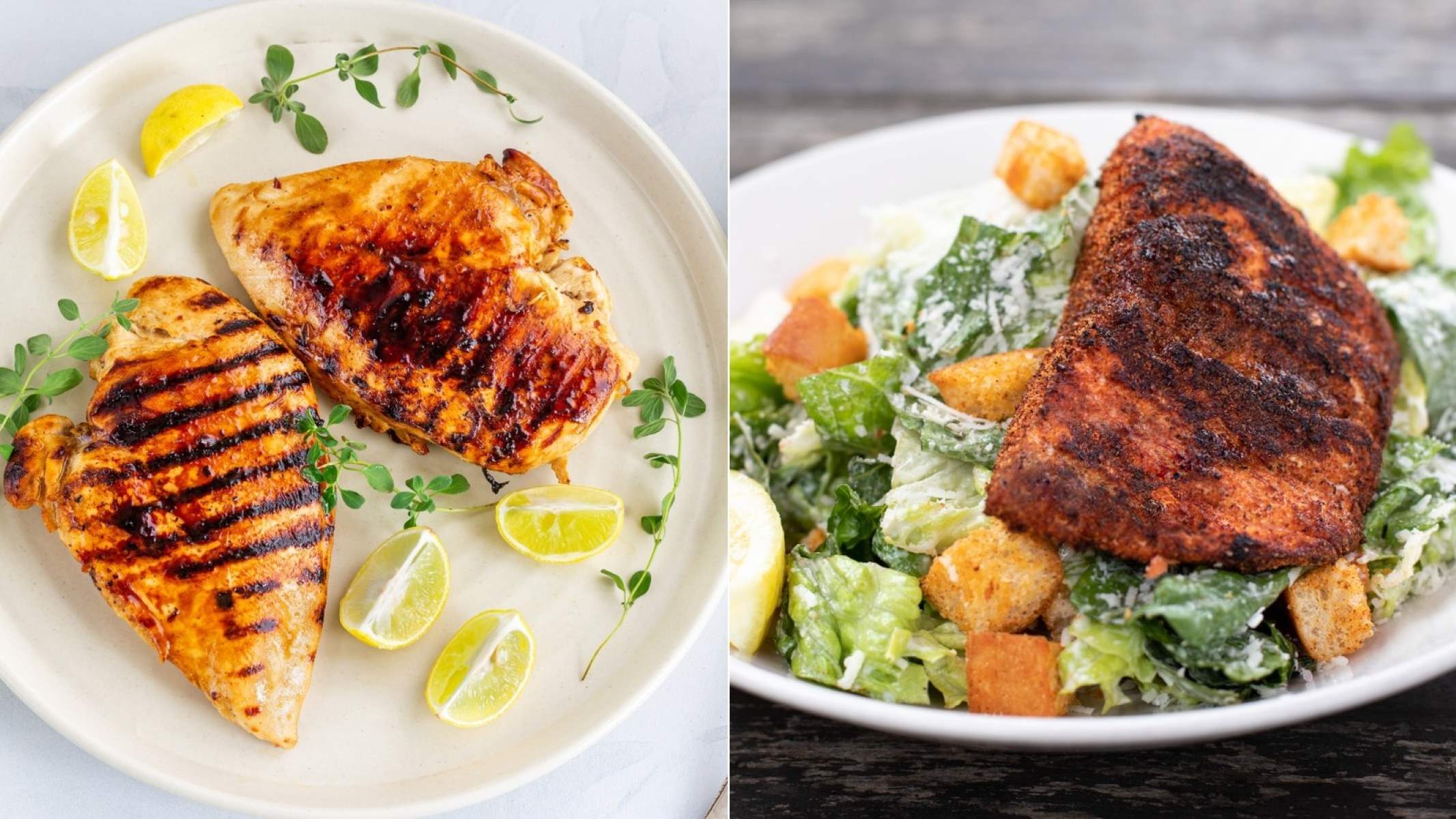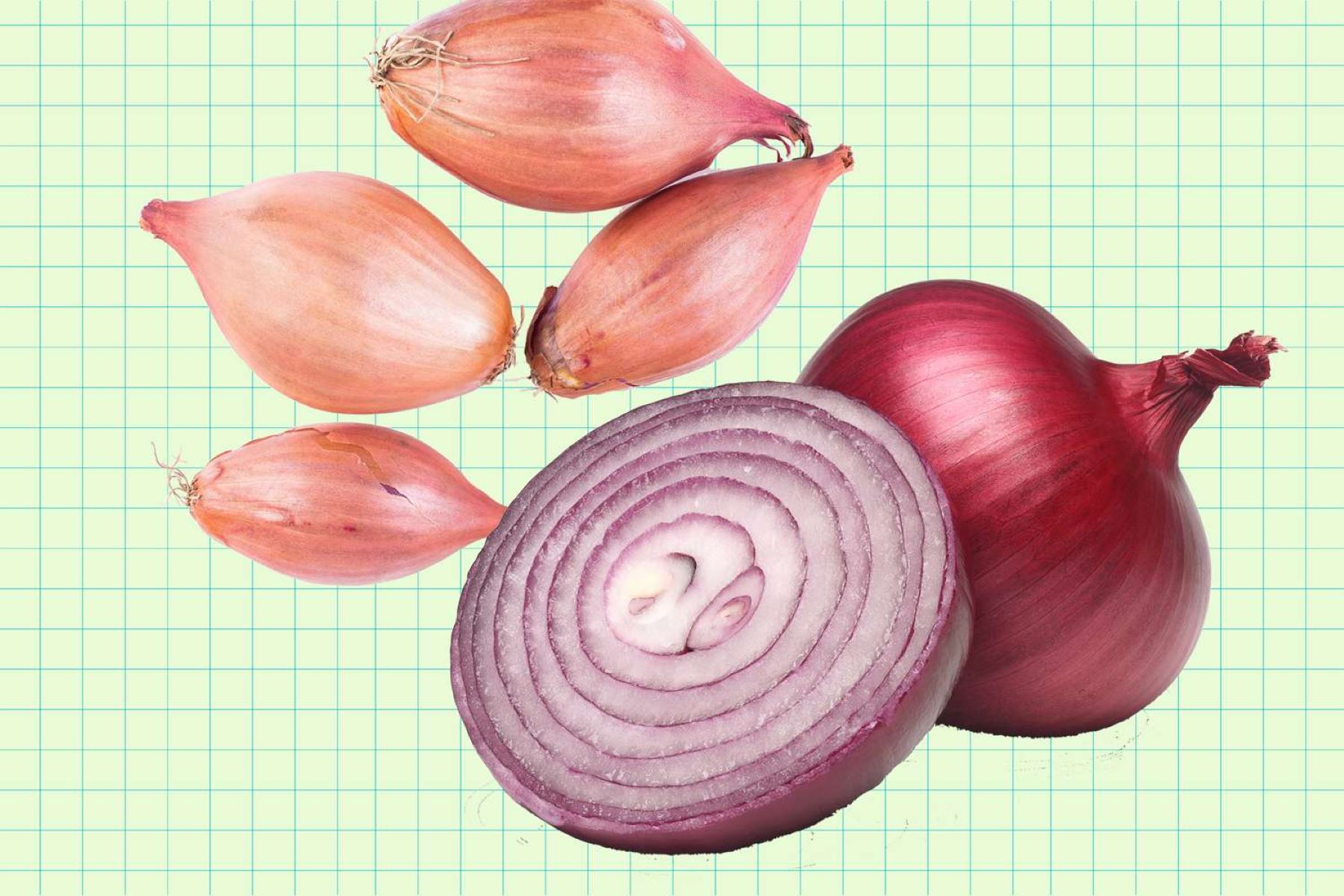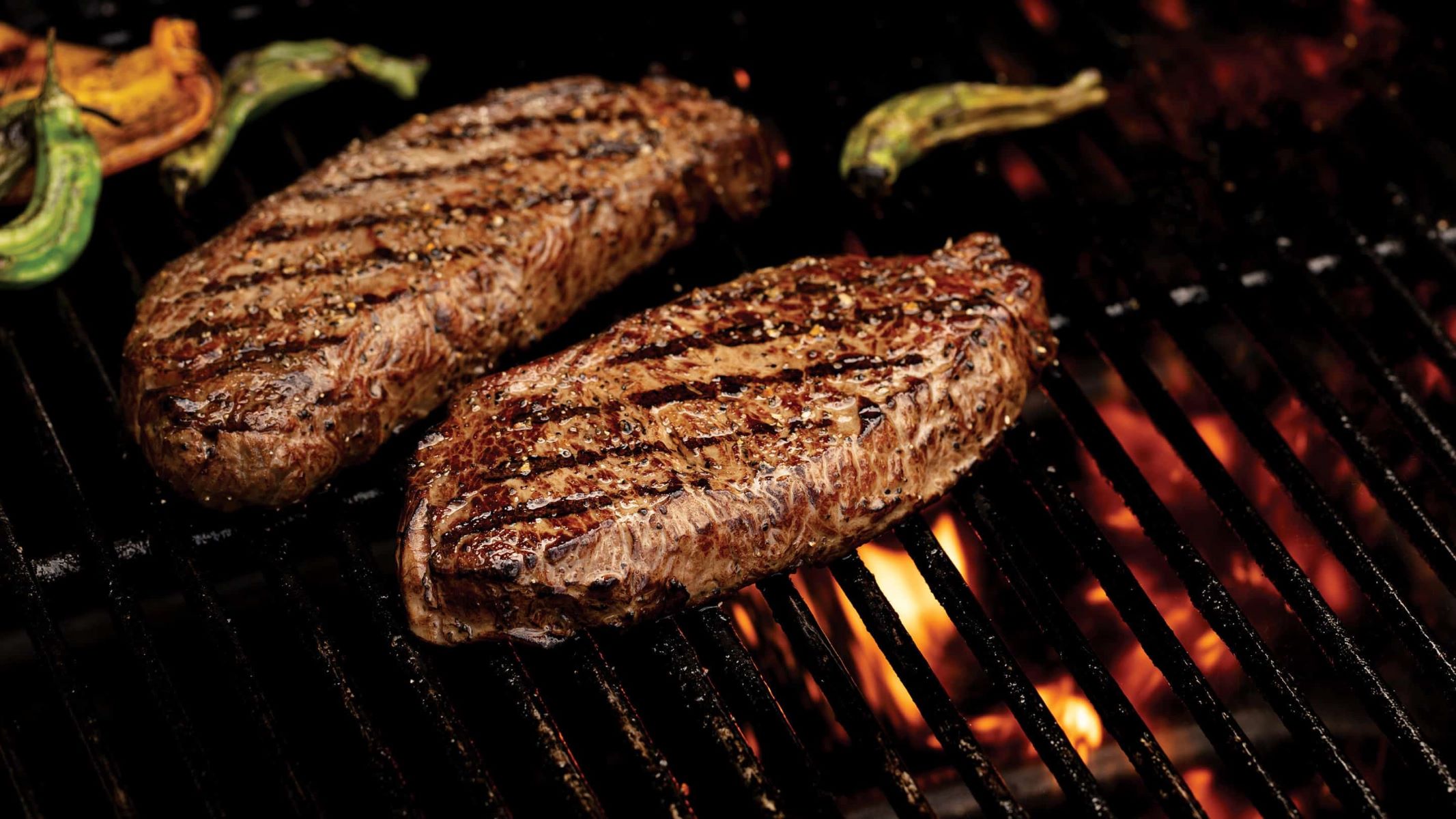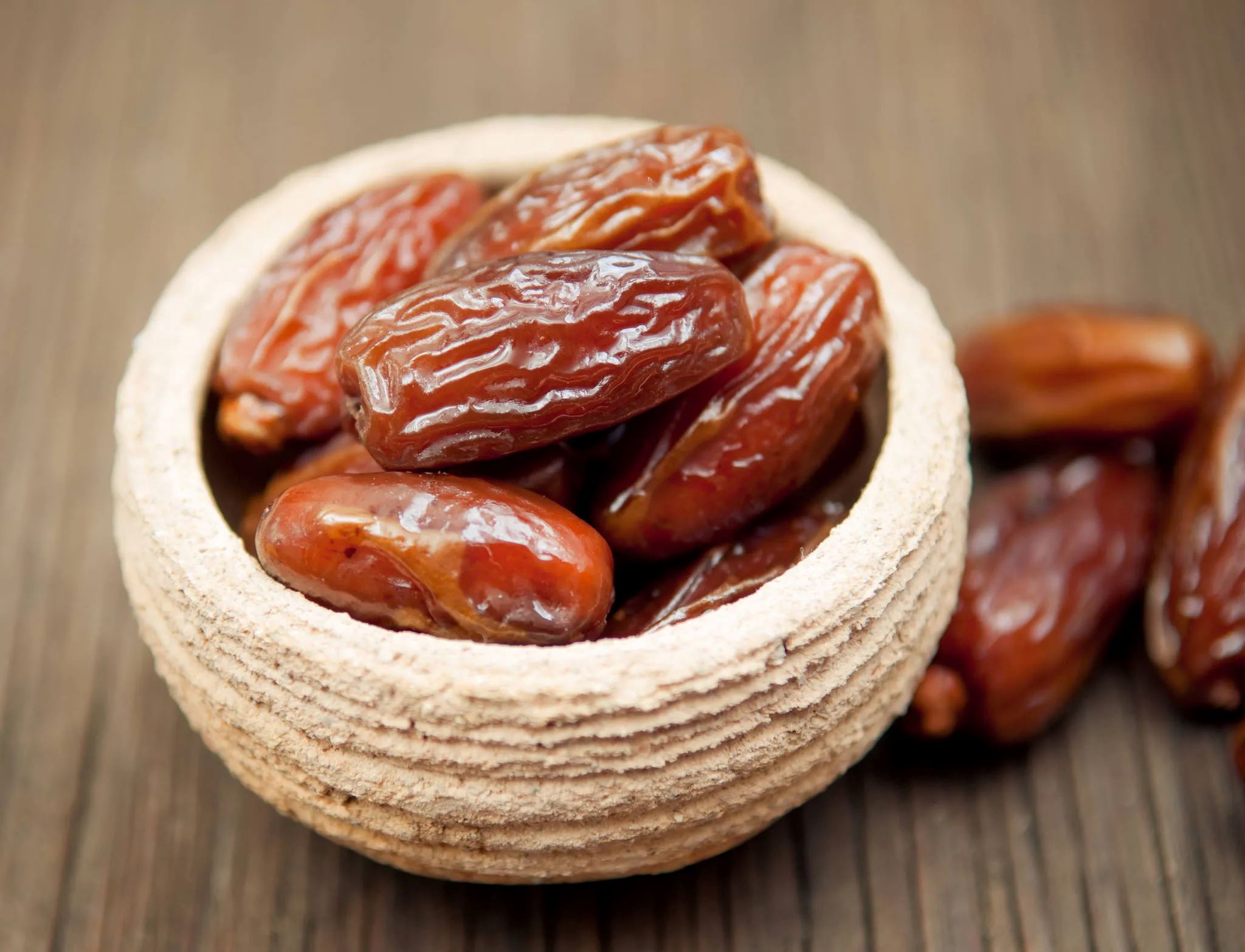Home>Food and Cooking>Grilled Vs. Blackened: The Ultimate Cooking Showdown!


Food and Cooking
Grilled Vs. Blackened: The Ultimate Cooking Showdown!
Published: January 17, 2024
Discover the ultimate showdown between grilled and blackened cooking techniques in this thrilling food and cooking series. Uncover the secrets to elevate your culinary skills!
(Many of the links in this article redirect to a specific reviewed product. Your purchase of these products through affiliate links helps to generate commission for Regretless.com, at no extra cost. Learn more)
Table of Contents
Introduction
When it comes to cooking techniques, grilling and blackening are two popular methods that can elevate the flavors and textures of various dishes. Each technique brings its own unique characteristics to the table, offering distinct culinary experiences that cater to different preferences and palates. Whether you're a cooking enthusiast or simply someone who appreciates a good meal, understanding the nuances of grilling and blackening can add depth to your culinary repertoire.
Grilling, a timeless culinary tradition, involves cooking food directly over an open flame or heat source. This method imparts a delightful smoky flavor and appealing char marks, making it a favorite for many outdoor cooking aficionados. On the other hand, blackening, a technique that originated in Cajun cuisine, involves coating the food in a blend of spices before searing it in a hot skillet. This process creates a robust crust with a tantalizing blend of flavors.
As we delve into the grilled vs. blackened cooking showdown, we will explore the intricacies of each technique, examining their impact on flavor, texture, nutrition, and overall health considerations. By the end of this culinary journey, you'll gain a deeper understanding of these two cooking methods, empowering you to make informed decisions when it comes to preparing delectable dishes that leave a lasting impression on your taste buds. Let's embark on this flavorful exploration to uncover the secrets of grilling and blackening, and discover which technique reigns supreme in the realm of culinary excellence.
Grilled Cooking Technique
Grilling is a beloved culinary technique that has stood the test of time, captivating the hearts and taste buds of food enthusiasts around the world. This method involves cooking food over direct heat, typically from a gas or charcoal grill, imparting a distinct smoky flavor and visually appealing sear marks. The process begins with preheating the grill, allowing it to reach the optimal cooking temperature, which can vary depending on the type of food being prepared.
One of the defining characteristics of grilling is the intense heat that sears the exterior of the food, sealing in its natural juices and creating a delightful contrast between the charred exterior and tender interior. This contrast contributes to the overall sensory experience, as the caramelization of sugars and proteins on the surface of the food enhances its flavor profile.
When it comes to grilling, the type of fuel used can significantly influence the flavor of the food. Charcoal grills infuse the food with a distinct smokiness, while gas grills offer precise temperature control and convenience. Additionally, the use of wood chips or chunks can introduce aromatic undertones, further enhancing the flavor of the grilled dishes.
The versatility of grilling extends beyond traditional barbecue fare, encompassing a wide range of ingredients, including meats, poultry, seafood, vegetables, and even fruits. This adaptability allows for endless culinary creativity, as different marinades, rubs, and seasonings can be employed to customize the flavor profile of the grilled dishes.
Furthermore, grilling is not limited to outdoor settings; indoor grilling options, such as stovetop grills and electric grills, offer year-round accessibility, allowing enthusiasts to enjoy the charred goodness regardless of the weather.
In addition to the delectable flavors produced through grilling, this cooking technique offers health benefits as well. Excess fats and oils are able to drip away from the food as it cooks, resulting in lighter, leaner dishes. This makes grilling a popular choice for individuals seeking to maintain a balanced and nutritious diet without sacrificing flavor.
Overall, the grilled cooking technique is a time-honored method that continues to captivate food lovers with its enticing aromas, rich flavors, and endless culinary possibilities. Whether it's the sizzle of a perfectly seared steak or the charred sweetness of grilled vegetables, the art of grilling transcends mere cooking; it embodies a culinary experience that celebrates the harmony of fire, food, and flavor.
Blackened Cooking Technique
The blackened cooking technique, born from the fiery depths of Cajun cuisine, is a culinary art form renowned for its bold flavors and tantalizing crust. This method involves coating the food in a robust blend of spices, typically including paprika, cayenne pepper, garlic powder, onion powder, and various other seasonings, before searing it in a hot skillet. The intense heat creates a charred exterior, delivering a burst of complex flavors while sealing in the food's natural juices.
The process of blackening begins with the preparation of the seasoning blend, which serves as the foundation for infusing the food with a symphony of aromatic spices. The choice of spices can be tailored to suit individual preferences, allowing for a personalized touch that enhances the overall flavor profile of the dish.
Once the food is generously coated with the seasoning blend, it is seared in a well-heated cast-iron skillet, creating a sizzling spectacle that captivates the senses. The high heat quickly caramelizes the spices, forming a dark, flavorful crust that locks in the essence of the ingredients. This transformative process imbues the dish with a harmonious medley of smoky, spicy, and savory notes, elevating its taste to new heights.
Blackening is commonly associated with seafood, particularly fish and shrimp, due to its ability to complement the delicate flavors of these proteins with its robust seasoning. However, the versatility of the blackening technique extends to other ingredients, including chicken, pork, and even vegetables, offering a diverse canvas for culinary exploration.
One of the defining characteristics of blackening is the creation of a deeply flavorful crust, which adds a textural dimension to the dish. The contrast between the crisp exterior and tender interior creates a sensory delight, inviting diners to savor each bite with a symphony of flavors and textures.
Furthermore, the blackening technique embodies a rich cultural heritage, rooted in the traditions of Cajun and Creole cuisine. Its legacy is deeply intertwined with the spirit of bold, vibrant flavors and the art of transforming simple ingredients into culinary masterpieces that leave a lasting impression.
In summary, the blackened cooking technique is a testament to the power of spices and heat, offering a sensory journey that celebrates the rich tapestry of flavors and textures. Whether it's the smoldering heat of blackened catfish or the aromatic allure of blackened chicken, this technique invites culinary enthusiasts to embark on a flavorful adventure that pays homage to the spirited traditions of Cajun cuisine.
Flavor and Texture Comparison
When comparing the flavor and texture profiles of grilled and blackened dishes, it becomes evident that each cooking technique imparts distinct characteristics that contribute to the overall sensory experience. Understanding the nuances of flavor and texture is essential for discerning culinary enthusiasts seeking to elevate their dining experiences.
Grilled Dishes:
Grilling introduces a delightful smoky essence to dishes, courtesy of the direct exposure to flames or heated surfaces. This imparted smokiness adds depth to the flavor profile, enhancing the natural characteristics of the ingredients. Furthermore, the caramelization of sugars and proteins on the surface of the food creates a savory crust, contributing to a pleasing textural contrast. Whether it's the seared marks on a steak or the charred sweetness of grilled vegetables, the visual appeal of grill marks serves as a prelude to the tantalizing flavors and textures that await.
Read more: Unconventional Steak Cooking: Smoker Vs. Grill, Broil, And Pan-Sear – Which Reigns Supreme?
Blackened Dishes:
In contrast, blackened dishes boast a robust and complex flavor profile, owing to the harmonious blend of spices that permeate the food. The intense heat of the blackening process not only sears the spices onto the exterior but also infuses the dish with a medley of smoky, spicy, and savory notes. This results in a depth of flavor that tantalizes the taste buds with each bite. Moreover, the blackening technique creates a distinctive crust that encapsulates the tender interior, offering a textural symphony of crispness and succulence. Whether it's the charred exterior of blackened fish or the aromatic allure of blackened chicken, the textural contrast adds a compelling dimension to the overall dining experience.
The Verdict:
In the realm of flavor and texture, grilling excels in delivering a smoky essence and a satisfying charred crust, while blackening triumphs with its robust spice-infused flavors and tantalizing crust. Both techniques offer unique sensory dimensions, inviting diners to embark on a flavorful journey that celebrates the artistry of cooking.
In summary, the flavor and texture comparison between grilled and blackened dishes reveals a captivating interplay of smoky nuances, savory depths, and textural contrasts, each contributing to a culinary experience that transcends mere sustenance. Whether it's the alluring aroma of grilled meats or the bold flavors of blackened seafood, both techniques offer a sensory adventure that enriches the palate and nourishes the soul.
Nutritional Comparison
When it comes to the nutritional aspects of grilling and blackening, both cooking techniques offer distinct advantages that cater to diverse dietary preferences and health considerations. Understanding the nutritional profiles of grilled and blackened dishes is essential for individuals seeking to make informed choices that align with their wellness goals.
Grilled Dishes:
Grilled dishes are often celebrated for their ability to deliver flavorful, yet lighter, meal options. The grilling process allows excess fats and oils to drip away from the food as it cooks, resulting in leaner and healthier preparations. This reduction in added fats contributes to lower calorie content, making grilled dishes an appealing choice for individuals aiming to maintain a balanced diet. Additionally, the retention of natural juices and flavors during grilling minimizes the need for excessive seasoning or added fats, further enhancing the nutritional value of the dishes. Furthermore, the versatility of grilling extends to a wide array of ingredients, including lean meats, poultry, seafood, and an assortment of vegetables and fruits, offering ample opportunities to create nutritious and flavorful meals.
Read more: Unconventional Steak Cooking: Smoker Vs. Grill, Broil, And Pan-Sear – Which Reigns Supreme?
Blackened Dishes:
In the realm of blackened dishes, the nutritional profile is influenced by the seasoning blend and cooking method. The use of spices in blackening adds depth of flavor without relying on additional fats or oils, contributing to the overall appeal of healthier meal options. The blackening process creates a robust crust that seals in the natural juices of the food, enhancing its succulence without the need for excessive added fats. While blackened dishes may exhibit a slightly higher calorie content due to the seasoning blend, the flavorful impact achieved without heavy reliance on fats makes them an enticing choice for those seeking a balance between nutrition and taste. Additionally, the versatility of the blackening technique allows for a diverse selection of proteins and vegetables to be prepared in a manner that emphasizes bold flavors without compromising on nutritional value.
Nutritional Considerations:
In the realm of nutritional considerations, both grilling and blackening offer distinct advantages. Grilling excels in producing leaner dishes with reduced calorie content, making it an ideal choice for individuals focused on weight management and overall health. On the other hand, blackening showcases the potential to deliver robust flavors without excessive reliance on added fats, appealing to those seeking flavorful meal options with a nuanced nutritional balance. Both techniques provide opportunities to explore a wide range of ingredients, allowing for culinary creativity while embracing health-conscious choices.
In summary, the nutritional comparison between grilled and blackened dishes underscores the diverse offerings of both cooking techniques, catering to varied nutritional preferences and dietary goals. Whether it's the lighter, smoky allure of grilled dishes or the bold, spice-infused flavors of blackened preparations, both techniques present opportunities to savor delicious meals while aligning with individual nutritional considerations.
Health Considerations
When evaluating the health considerations associated with grilling and blackening, it is essential to recognize the impact of cooking methods on nutritional integrity and overall well-being. Both techniques offer distinct advantages and considerations that resonate with individuals seeking to make informed choices that align with their health goals.
Grilling:
Grilling is often celebrated for its ability to produce leaner dishes by allowing excess fats and oils to drip away from the food as it cooks. This reduction in added fats contributes to lighter meal options, making grilling an appealing choice for individuals focused on weight management and cardiovascular health. Furthermore, the retention of natural juices and flavors during grilling minimizes the need for excessive seasoning or added fats, enhancing the nutritional value of the dishes. The versatility of grilling extends to a wide array of ingredients, including lean meats, poultry, seafood, and an assortment of vegetables and fruits, offering ample opportunities to create nutritious and flavorful meals. Additionally, the outdoor cooking experience associated with grilling promotes a sense of community and leisure, encouraging individuals to embrace a balanced lifestyle that incorporates physical activity and social engagement.
Read more: The Ultimate Showdown: Shazam Vs Black Adam!
Blackening:
In the realm of blackened dishes, the health considerations are influenced by the seasoning blend and cooking method. The use of spices in blackening adds depth of flavor without relying on additional fats or oils, contributing to the overall appeal of healthier meal options. The blackening process creates a robust crust that seals in the natural juices of the food, enhancing its succulence without the need for excessive added fats. While blackened dishes may exhibit a slightly higher calorie content due to the seasoning blend, the flavorful impact achieved without heavy reliance on fats makes them an enticing choice for those seeking a balance between nutrition and taste. Furthermore, the versatility of the blackening technique allows for a diverse selection of proteins and vegetables to be prepared in a manner that emphasizes bold flavors without compromising on nutritional value. The rich cultural heritage associated with blackening also offers a holistic perspective on food, emphasizing the importance of savoring meals as a means of nourishing the body and spirit.
In summary, both grilling and blackening present health considerations that cater to diverse nutritional preferences and dietary goals. Whether it's the lighter, smoky allure of grilled dishes or the bold, spice-infused flavors of blackened preparations, both techniques offer opportunities to savor delicious meals while embracing health-conscious choices. By understanding the nuanced health considerations associated with grilling and blackening, individuals can make informed decisions that resonate with their holistic well-being, fostering a harmonious relationship between food and health.
Conclusion
In the ultimate showdown between grilling and blackening, we have embarked on a flavorful journey that has unveiled the unique characteristics and culinary allure of each cooking technique. The art of grilling, with its time-honored tradition and ability to infuse dishes with a delightful smoky essence, has captivated food enthusiasts for generations. On the other hand, the blackening technique, rooted in the spirited traditions of Cajun cuisine, has showcased the transformative power of spices and heat, delivering bold, complex flavors and tantalizing crusts.
As we reflect on the flavor and texture comparison, it becomes evident that grilling excels in imparting a smoky essence and a satisfying charred crust, while blackening triumphs with its robust spice-infused flavors and tantalizing crust. Both techniques offer unique sensory dimensions, inviting diners to embark on a flavorful journey that celebrates the artistry of cooking.
When considering the nutritional and health aspects, grilling stands out for its ability to produce leaner dishes with reduced calorie content, making it an ideal choice for individuals focused on weight management and overall health. Meanwhile, blackening showcases the potential to deliver robust flavors without excessive reliance on added fats, appealing to those seeking flavorful meal options with a nuanced nutritional balance. Both techniques provide opportunities to explore a wide range of ingredients, allowing for culinary creativity while embracing health-conscious choices.
In the grand scheme of culinary exploration, the showdown between grilling and blackening transcends mere cooking techniques; it embodies a celebration of flavors, textures, and cultural legacies. Whether it's the alluring aroma of grilled meats or the bold flavors of blackened seafood, both techniques offer a sensory adventure that enriches the palate and nourishes the soul.
Ultimately, the choice between grilling and blackening is a matter of personal preference and culinary creativity. Each technique offers a distinct culinary experience, inviting individuals to savor the artistry of cooking and the pleasures of indulging in well-crafted dishes. As we conclude this culinary exploration, we celebrate the rich tapestry of flavors, textures, and traditions that define the world of grilling and blackening, inviting food enthusiasts to embrace the joy of creating and savoring unforgettable meals.












